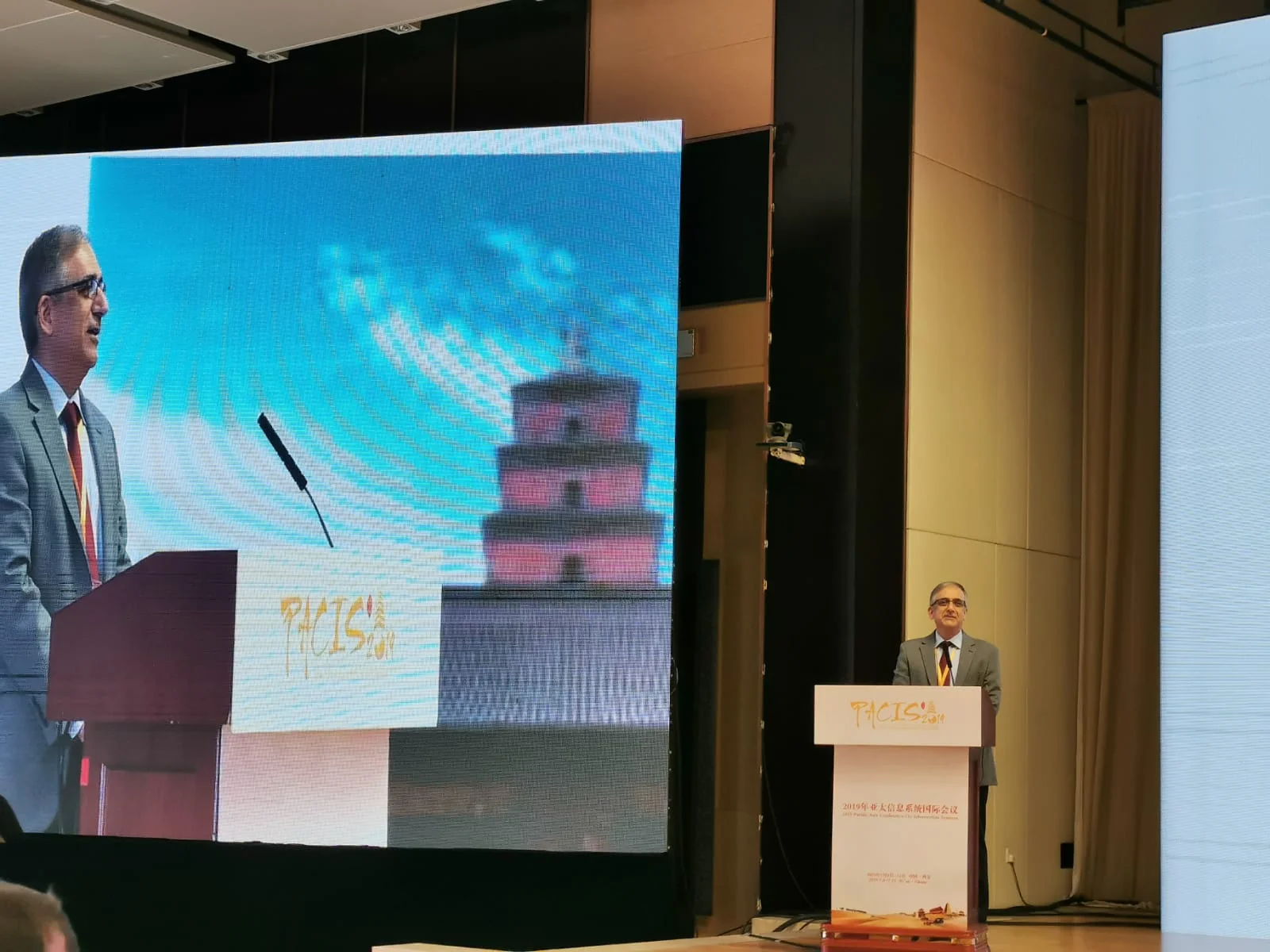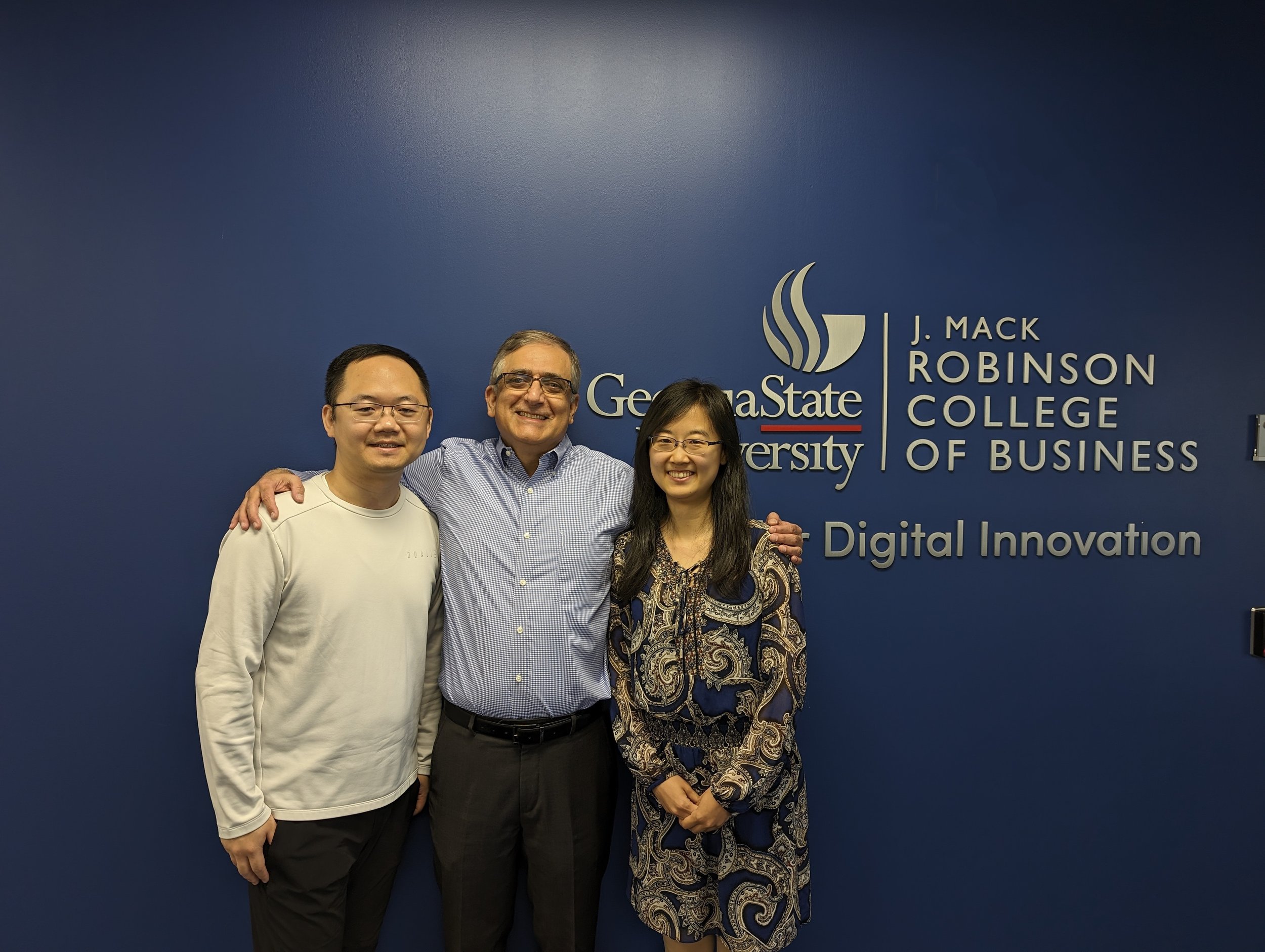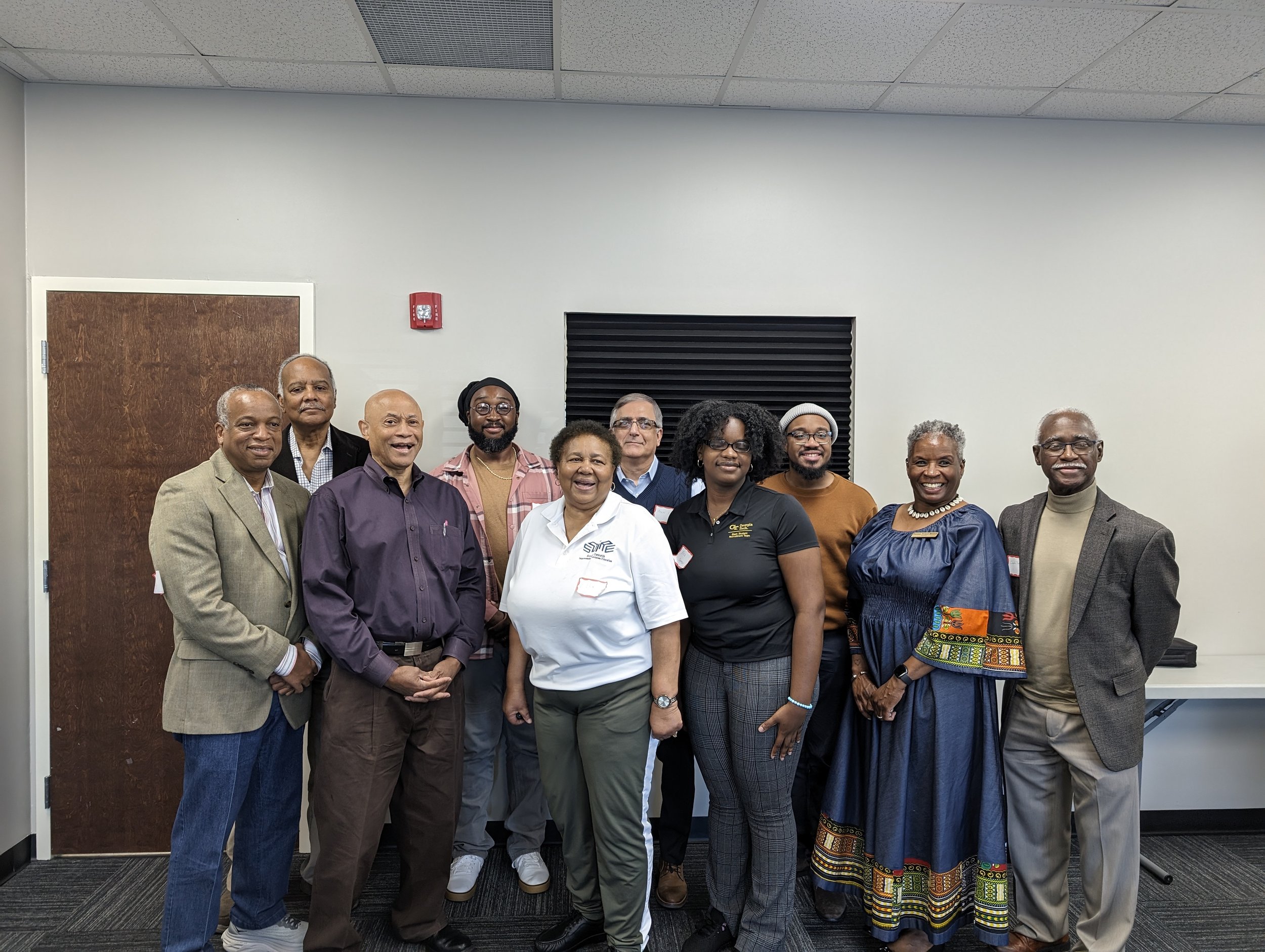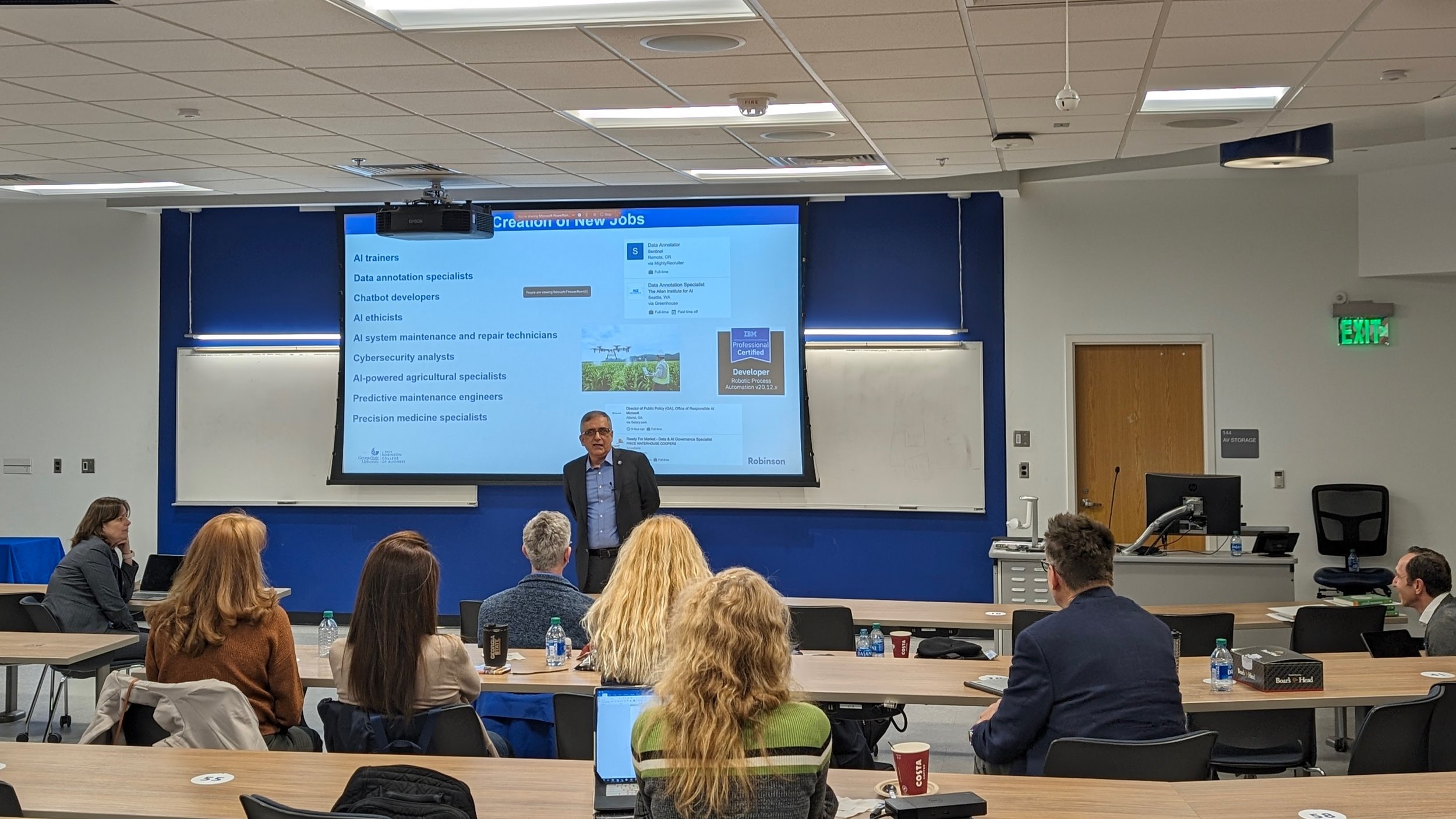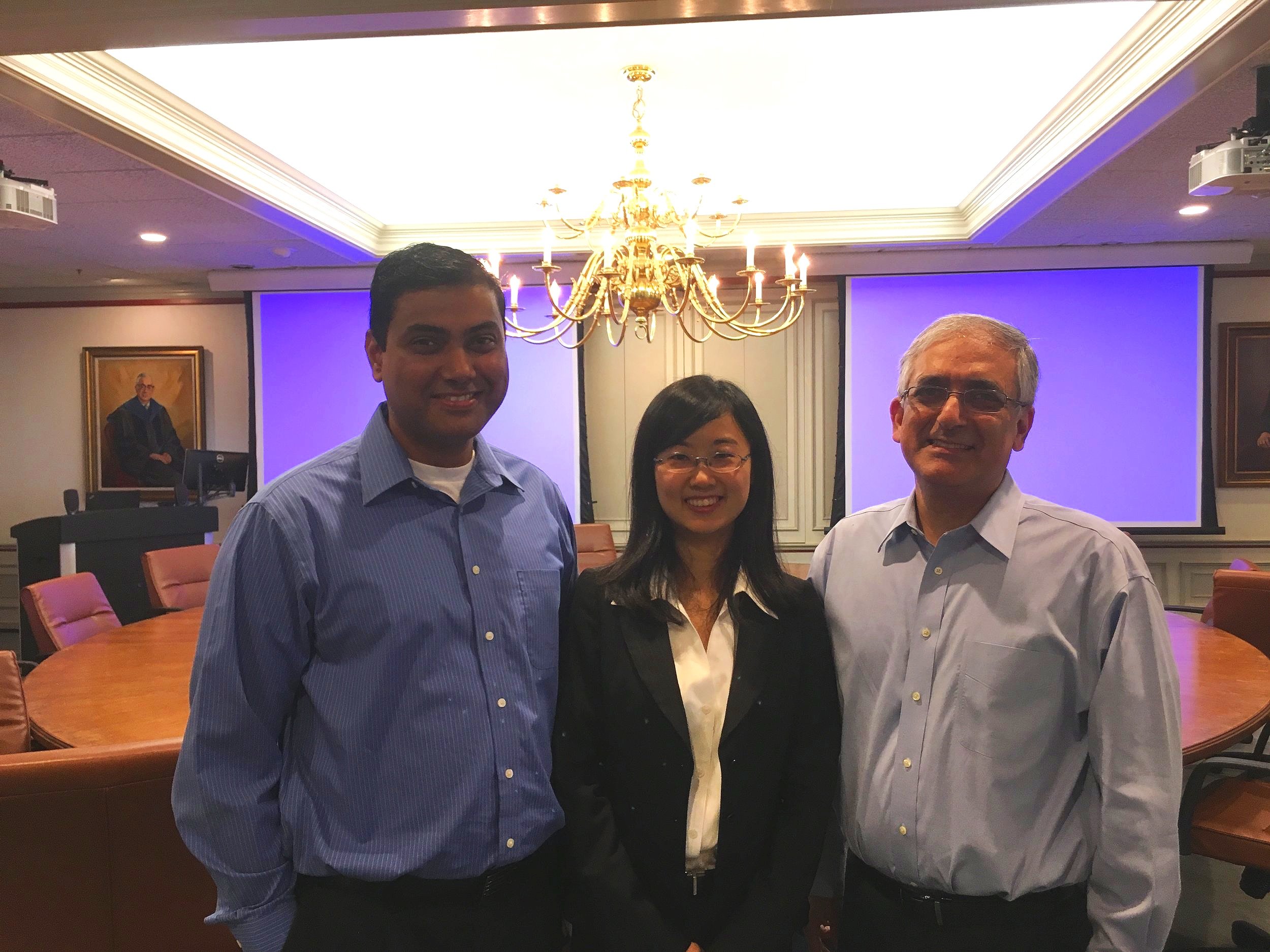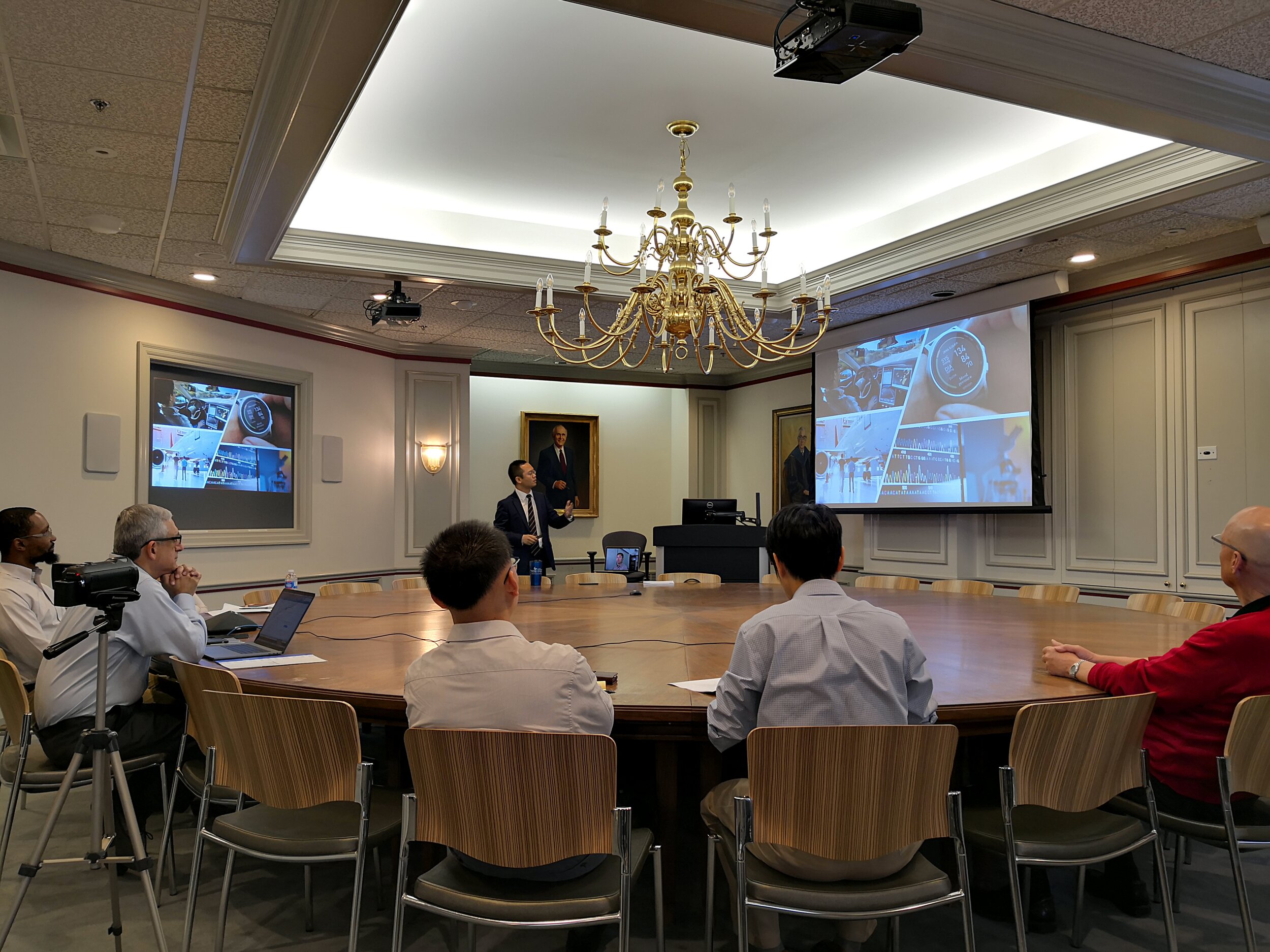Arun Rai is Regents' Professor of the University System of Georgia and holds the Howard S. Starks Distinguished Chair at the Robinson College of Business at Georgia State University.
Director and Co-founder, Robinson College of Business Center for Digital Innovation (CDIN), an interdisciplinary research center that focuses on digital innovation and promotes industry-university partnerships.
Appointed Regents' Professor in 2006 by the Board of Regents' of the University System of Georgia for outstanding contributions in research, teaching and service, and has received Robinson College of Business Faculty Recognition Awards for distinguished contributions in research, teaching and service.
Fellow of the Association for Information Systems (AIS) (2010) and Distinguished Fellow of the INFORMS Information Systems Society (ISS) (2014). Received Impacts Awards from the AIS (2022) and INFORMS ISS (2022), the INFORMS ISS Inaugural President’s Service Award (2021) and the LEO Award from the Association for Information Systems for Lifetime Exceptional Contributions to the Information Systems discipline (2019). Honored as a 2024 AACSB Influential Leader.
Served as Editor-in-Chief for the MIS Quarterly from 2016 to 2020. Has also served as Senior Editor for Information Systems Research, MIS Quarterly, and Journal of Strategic Information Systems and Associate Editor for journals such as Management Science.
Has served on the Board of Directors of Indraprastha Apollo Hospitals and Apollo Health & Lifestyle Limited. Collaborated on research projects with major corporations across sectors (e.g., Axim Collaborative, Apollo Hospitals, China Mobile, Daimler-Chrysler, Emory Healthcare, Gartner, Georgia-Pacific, Grady Hospital, IBM, Intel, Laureate Inc., SAP, SunTrust, United Parcel Service). Served on the Developing and Deploying at Scale Disruptive Technologies Working Group of the US National Commission on Innovation and Competitiveness Frontiers and serves on the AI Advisory Council for the State of Georgia.
AI Research Frontiers at Georgia State University
“These technologies are providing individuals, teams and organizations the potential to reconceive what we do, how we do it, how we collaborate, how we create products and even how we live our lives,” said Rai.
“What we are seeing is a much more pronounced shift towards AI affecting virtually every sector of our economy. It's affecting all of our major industries and people's living and working.” Rai explained, “But I think where one gets a more granular understanding, is to shift the discussion from what it's doing at the level of jobs to what it is doing at the level of skills.”
Rai said that the discussion about how AI will affect the workforce is not static: certain skills will be augmented by AI, certain skills will be displaced, while new skills will be needed for existing and new jobs. Thus, partnerships among industry, academia and government will be crucial to upskilling and reskilling the workforce alongside the rapid development of the technology.
Keynote Speaker at the Executive Education Summit on Generative AI
Over two dozen business executives from Nike, Clorox, Microsoft, UPS, The Home Depot, and others participated in the half-day workshop in October 2023. This immersive executive education session was led by Rai and Nate Bennett, professor of management and faculty director of Robinson's Executive MBA program.
Rai led participants through an insightful discussion on the opportunities of generative A.I. and what the future looks like as this technology revolutionizes how organizations create value in software, logistics, retail, healthcare and more.
During the second half of the workshop, Bennett facilitated a dynamic panel discussion with Rai, data scientist and design leader Péter Molnár, and legal expert John Thielman, associate chair of the Maurice R. Greenberg School of Risk Science.
Keynote Speaker at the Future of Work Symposium, University of Nebraska Omaha (UNO)
As the keynote speaker for second iteration of UNO’s Future of Work Symposium Series on April 21, 2023, Rai spoke to how artificial intelligence can impact the workforce through automation, or displacing human skills; augmentation, or using AI to complement skills; and creation, or developing new human skills and jobs to utilize AI. In his remarks, Rai also discussed the importance of transparency, fairness, and ethical uses of AI.
“We are at this point in research where we’re looking at AI exposure in the industry,” Rai said, “We’re looking at AI for different occupations and jobs, but distilling it down to skills, and these models fundamentally need to be dynamic. Because AI is not stagnant, labor markets are not stagnant.”
Following Rai’s remarks, a panel comprised of researchers and leaders from area businesses and organizations took to the stage to engage in a Q&A session featuring questions from the audience.
Rai pointed out two key aspects that became recurring themes in his remarks and in the following panel discussion. First, AI does not have to always replace, but can be used as a tool to work smarter and reduce disparities. Second, the true potential of implementing AI in the future of the workplace lies at the intersection of AI and other fields.
Rai received the the 2022 AIS Impact Award for the impact of his pioneering research on digital supply chain innovations in transforming organizations and shaping policy recommendations. It is the association’s premier award for the impact of information systems research beyond academia, and honors scholars whose IS research has had widespread impact on practice in business and society.
The award was presented to Rai on December 12, 2022, at the International Conference on Information Systems (ICIS) in Copenhagen, Denmark.
2022 INFORMS Information Systems Society (ISS) Practical Impacts Award
Rai received the 2022 INFORMS ISS Practical Impacts Award, which honors distinguished information systems academics for outstanding leadership and sustained impact on industry.
The award was presented to Rai on October 16, 2022, at the INFORMS annual meeting in Indianapolis, IN.
Authors: Straub, D., Warkentin, M., Rai, A., and Ding, Y.
Purpose – Firms embedded in networks of relations are theorized through Gnyawali and Madhavan’s
(2001) (G&M) structural embeddedness model to gain competitive advantage from topological
characteristics. Empirical studies to support their theory have never been executed in full. Our study
provided a full empirical test of their model in a digital trading network to achieve a higher degree of
certainty that those network structural characteristics can have a major impact on the degree to which
certain firms lead to competitiveness in a digital trading network environment.
Design/methodology/approach – To examine how firms respond in competitive situations, we chose the
hyper-active digital trading network, eBay as our empirical context. We used eBay auction data to analyze how
the network characteristics of eBay resellers impact their competitive behaviors.
Findings – Our study found strong support for the G&M model of competitiveness. We offer explanations for
where support was not as strong as the Gynawali and Madavan theory proposes.
Research limitations/implications – Our research is limited by our chosen context and findings in
support of part of G&M model. Future studies in other digital contexts are needed to enhance the modeling
of network topologies and further study the impacts of network density and structural autonomy on
competitive action.
Practical implications – Our study suggests that managers proceed cautiously in forming partnerships,
weighing circumstances where the firm can find itself with increased information power and avoiding, to the
greatest extent possible, situations where the playing field is roughly equal.
Social implications – Theory-making in this domain has begun as well as initial empirical testing. Much
more needs to be accomplished, though, before embeddedness modeling can be thought of as being well
established.
Originality/value – The G& M Model of competitiveness is an SNA explanation of why some competitive
units succeed and others do not. Our study is the first, full blown empirical analysis of the theory.
Authors: Rai, A., Chen, Y., and Lin, Y.
Upcoming.
Authors: Pye, J., Rai, A., and Dong, J.
Upcoming.
Authors: Chen, L., Rai, A., Wei, W., and Guo, X.
Match formation is challenging in online matching platforms where suppliers are subject to dynamic capacity constraints. We provide a theoretical foundation for understanding how online matching platforms support the transmission and triangulation of multisource information for consumers to infer provider service quality and dynamic capacity states, and achieve desirable matching outcomes. Situating this study in the context of an online health consultation community (OHCC) and drawing upon signaling theory, we theorize how physicians’ owned and earned signals influence physicians’ voluntary online consultations with new patients they have not consulted with previously. Importantly, we articulate how these signaling effects are contingent upon physicians’ dynamic capacity in OHCC. We collected longitudinal data from a large OHCC in China and used a hidden Markov model (HMM) to characterize the dynamic physician capacity in the OHCC and test the hypotheses. Our findings reveal that service professionals’ owned and earned signals interactively work together to balance supply and demand dynamically, and thereby facilitating matchmaking. In OHCCs, where physicians provide voluntary service beyond their primary jobs at hospitals, we find that owned and earned signals increase patient consultations in different patterns contingent upon physicians’ capacity states. In addition, we discover the complementary and substitute relationships between owned signals and earned signals change when physicians are in different capacity states. The findings have significant implications for our understanding of online match formation under dynamic capacity constraints and the design of OHCCs.
Authors: Nguyen, A., Rai, A., and Maruping, L.
This paper sets out to explore the unintended effects of human-machine moderation in mitigating harassment within online communities. We examine communities that use a block-list type bot to prevent harassment from the source of harassment. Drawing from social categorization and selective exposure theories, we expect that employing a machine alongside humans for community moderation will create unintended adverse effects. Within the moderated focal community, we hypothesize an emboldening effect characterized by an increase in harassment among community members directed at their outgroup members. Conversely, we expect a disengaging effect – a downward trend in the focal community’s membership. In neighboring communities that share the same topic of discussion, we expect a spillover effect - an increase in harassment. Employing Detoxify, a Bidirectional Encoder Representations from Transformers (BERT)-based model, we evaluate harassment scores in the focal community by analyzing 4 million Reddit comments across various communities. These scores serve as inputs for Bayesian Structural Time Series analysis, revealing evidence for both disengaging and spillover effects. For the emboldening effect, we use community-specific keywords in a predefined computer-assisted document classification approach – Keyword Assisted Topic Model (keyATM) to identify the target of harassment. We use mean comparison and regression discontinuity to assess the change in the level of harassment targeting outgroup members before and after the human-machine moderation implementation.
Authors: Teli, S., Rai, A., and Lin, Y.
Artificial intelligence (AI) has become an important driver of economic growth and innovation. With rapid advances in AI, firms have a strategic opportunity to reenvision the cognitive reapportionment of tasks between humans, AI, and non-AI technologies. In doing so, firms can transform and dramatically elevate value creation through their business models, processes, and market offerings. We focus on a key risk, patent infringement litigation (PIL), that can adversely impact a firm’s value creation with AI. We posit and demonstrate that firms facing AI-PILs would have more negative short term abnormal returns compared to firms facing non-AI PILs. We further suggest that the abnormal returns are moderated by the types of plaintiffs and AI patents in which the abnormal returns are more negative when the plaintiffs are non-practicing entities (versus practicing entities) and when the AI patents at suit concern expertise-driven (versus data-driven) AI. Exploring the moderators jointly, we find evidence that for data-driven AI patents, the negative abnormal returns are stronger when the plaintiffs are practicing entities, but for expertise-driven AI patents, the negative abnormal returns are stronger when the plaintiffs are non-practicing entities.
Authors: Aghasi, A., Rai, A., and Xia, Y.
Given the abundance of images related to operations that is being captured and stored, it behooves firms to innovate systems using image processing to improve operational performance that refers to any activity that can save labor cost. In this paper, we use deep learning techniques, combined with classic image/signal processing methods, to propose a pipeline to solve certain types of object counting and layer characterization problems in firm operations. Using data obtained by us through a collaborative effort with real manufacturers, we demonstrate that the proposed pipeline method is able to achieve higher than 93% accuracy in layer and log counting. Theoretically, our study conceives, constructs, and evaluates proof-of-concept of a novel pipeline method in characterizing and quantifying the number of defined items with images, which overcomes the limitations of methods based only on deep learning or signal processing. Practically, our proposed method can help firms significantly reduce labor costs and/or improve quality and inventory control by recording the number of products in real time, more accurately and with minimal upfront technological investment.
Authors: Lin, Y. K. and Rai, A.
Software is the foundation of the digital economy. The scope of software patent protection and the social and private value of software patenting are hence central to recent policy debates. The landmark 2014 U.S. Supreme Court ruling in Alice Corp v. CLS Bank had a profound impact on software patenting, drastically narrowing the scope of patent protection on software innovation. We theorize and provide empirical evidence that a narrower scope of software patent protection is associated with a greater degree of open-source activities and improved sales in software firms. We also evaluate how individual firm’s ex ante software patent stock may moderate the proposed relationships. These findings offer insights into the roles of patent scope for software innovation in the digital economy and have important implications for the software patent and digital innovation literatures. They also have compelling implications for patent policies on software and software-related inventions, such as artificial intelligence, blockchains, cloud computing, and other emerging digital innovations.
Authors: Jiang, Z., Rai, A., Hua, S., Cheng, N., and Hu, Y.
Digital platforms facilitate the flow of information and the execution of transactions. This study investigates the impact of signals from platform-provided online information regarding search and experience attributes of products on the prices of their offline transactions. We situate our theorizing and empirical work in the context of digital real estate platforms. Our results suggest that online information pertaining to properties’ experience attributes has a significant influence on the prices of offline property transactions. The amount of online information relating to experience attributes—specifically, length of textual property description and the number of photos—positively influences the sale price of a property. In contrast, the amount of online property information related to search attributes—specifically, facts and features—has no significant influence on the property’s sale price. In addition, online property information on experience attributes has a significant impact on the sale price of uncommon properties (those valued significantly above or below their neighborhood averages), whereas its impact on the price of common properties (those valued close to their neighborhood averages) is insignificant. The findings are robust to various model specifications and across property transactions in different years, seasons, and geographical regions. They are also neither subject to confounding effect of real estate agents’ service quality nor driven by unobserved property heterogeneities. The findings shed light on how signals from online property information are used by home buyers and sellers for different types of properties. The insights have implications for how real estate professionals can better utilize digital platforms to convey signals regarding properties and facilitate property transactions and for how the platforms can be designed to support the exchange of information that provides signals on the quality of offline goods that are highly risky and experiential.
Authors: Pye, J., Rai, A., and Dong, J.
Prior research has differentiated intrafirm information technology (IT) capabilities that reduce internal coordination costs and interfirm IT capabilities that reduce external transaction costs. However, the influence of developing these capabilities on business value has not been explored in the realm of institutional governance—the regulatory context that defines the rules of the game for firms. We suggest that the value of a firm’s investments in different types of IT capabilities development (ITCD) is evaluated by the financial market contingent on the firm’s regulatory context. Our study is situated in the U.S. electric utility industry undergoing a market restructuring process to understand the impacts of intrafirm and interfirm ITCD on market value conditional on a firm’s regulatory context characterized by the extent to which its business is located in states that allow consumer choice (i.e., deregulation), as well as the extent to which its business is located in states that deliberate regulations regarding price control, value chain configuration, and information control (i.e., regulatory uncertainty). We find that intrafirm ITCD for enhancing efficiency is rewarded in a firm’s market valuation under a high level of deregulation. We further find that under a high level of regulatory uncertainty, interfirm ITCD for fostering flexibility can hedge against regulatory uncertainty and increase firm value. A key contribution of our work is demonstrating external institutional governance can influence the market value that firms accrue from different types of ITCD, thereby elaborating the complementarity in theoretical explanations of IT capabilities and institutional governance.
Authors: Chen, L., Hsieh, Po-An JJ, and Rai, A.
Intelligent systems are transforming the nature of work as humans and machines collectively perform tasks in novel ways. While intelligent systems empower employees with algorithm-generated knowledge, they require employees to adapt how they work to enhance their job performance. We draw upon the coping-adaptation framework as the overarching theoretical lens to explain how employees’ perceptions of IntelSys knowledge as an empowering external coping resource affect the mechanisms through which they adapt to IntelSys-induced changes to their work, as well as how their internal coping resources regulate their adaptation. Our coping-adaptation explanation of intelligence augmentation integrates (i) the empowering role of external coping resources, specifically IntelSys knowledge, captured as intelligent system knowledge empowerment (ISK-Emp), (ii) the benefit-maximizing adaptation mechanism (through infusion use enhancement) and the disturbance-minimizing adaptation mechanism (through role conflict reduction) that channel the impact of ISK-Emp on job performance, and (iii) the regulating role of internal resources, specifically, employees’ work experience, in influencing the importance of the adaptation mechanisms for the employee. We conduct studies in three distinct settings in which different intelligent systems were implemented to support employees’ knowledge work. Our findings show that ISK-Emp increases job performance through each of the two adaptation mechanisms. The benefit-maximization mechanism (via enhanced infusion use) plays a more important role for novice employees than for experienced employees, whereas the disturbance-minimization mechanism (via reduced role conflict) has higher importance for experienced employees than for novice employees. Our work provides insights into the critical role of adaptation mechanisms in linking ISKEmp with performance outcomes and into the relative importance of the adaptation mechanisms through which job performance payoffs are realized by novice and experienced employees.
Authors: Lin, Y., Rai, A., and Yang, Y.
Subscription-based crowdfunding (SBC) is an emerging platform for creators of digital content (e.g., music, comics, stories, and videos) to build their person brands and garner support from fans. A unique feature that sets SBC apart from other crowdfunding models is the creator-centered freemium model. That is, creators can offer free content to attract fans, who can then subscribe to financially support a creator; in return, the backers gain access to the creator’s premium content and exclusive perks. In doing so, creators receive regular (e.g., monthly) subscription payments from their backers to sustain their ongoing creative activities. The SBC context engenders unique creator-centric dynamics and mechanisms that are ill-understood in crowdfunding literature. In this study, we investigate the effects of SBC creators’ two information control strategies: (1) earnings concealment and (2) private postings. From a brand management perspective, we theorize that earnings concealment improves brand authenticity, whereas private postings foster brand differentiation, co-creation, and attachment. These will lead to a positive impact on the financial (backer base) and nonfinancial (fan participation) outcomes of an SBC campaign. Furthermore, we propose a reinforcing dynamic between information control and SBC performance whereby better SBC outcomes will increase the creators’ tendencies to engage in information control. To test our hypotheses, we obtained panel data from a large SBC platform that contains monthly observations of 92,850 creators from August 2016 to December 2017. The results of our empirical analyses provide evidence for the benefits of the two information control strategies in SBC and demonstrate the reinforcing relationships between information control and SBC outcomes for creators. We discuss the theoretical and practical implications of our findings.
Authors: Sambhara, C., Rai, A., and Xu, X.
We investigate how public firms configure their enterprise systems (ES) portfolio when faced with information risk, which refers to the likelihood that corporate financial information is of poor quality. We focus on firms’ configuration of their ES portfolio by introducing a novel construct: ES portfolio balance, or the relative proportion of two categories of ES modules, operational and functional. We draw on the theory of information processing to hypothesize the impact of information risk on ES portfolio balance and how this impact is affected by internal controls. We construct a multi-source panel dataset of 697 firms and 1,993 firm-year observations from 2005–2008 and use econometric and multivariate procedures to test our hypotheses. We find that when faced with an increase in information risk, firms change their ES portfolio balance more toward operational modules. However, when such firms are also faced with materially weak internal controls, they change their ES portfolio balance more toward functional modules instead. These findings expand our understanding of how firms’ information processing needs drive the configuration of their ES portfolio and, more broadly, IT resources portfolio.
Click here for complete List of Articles
